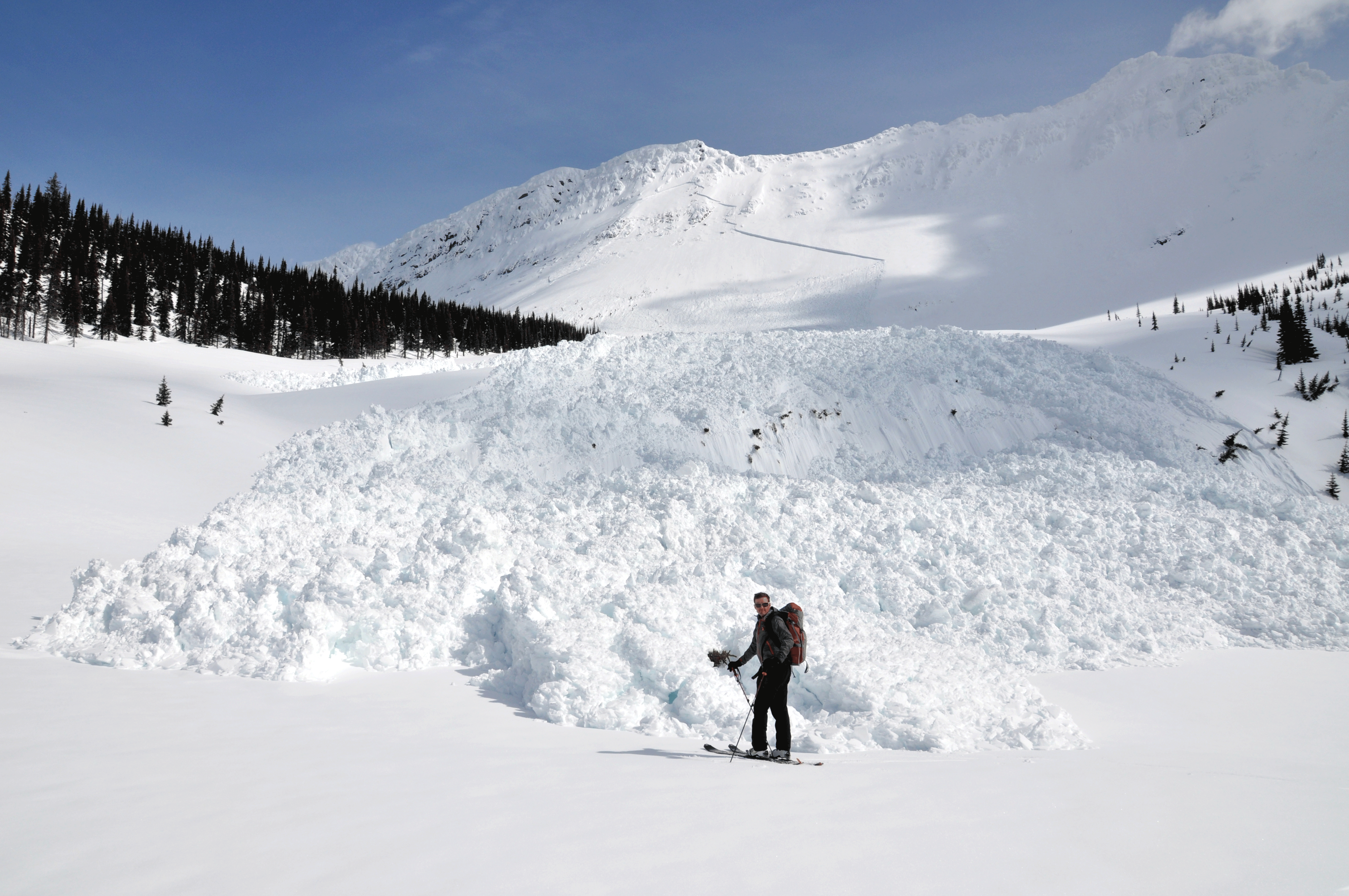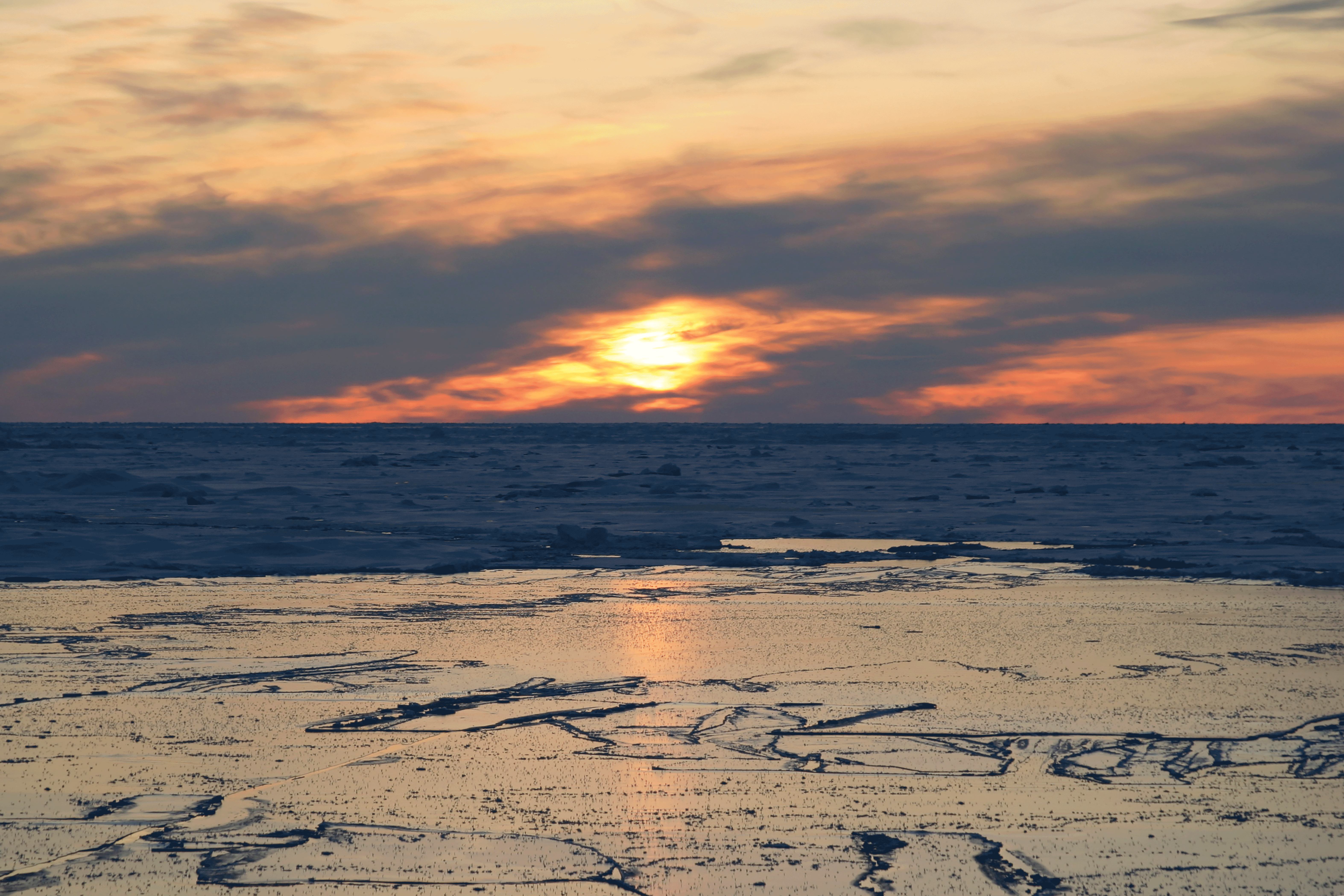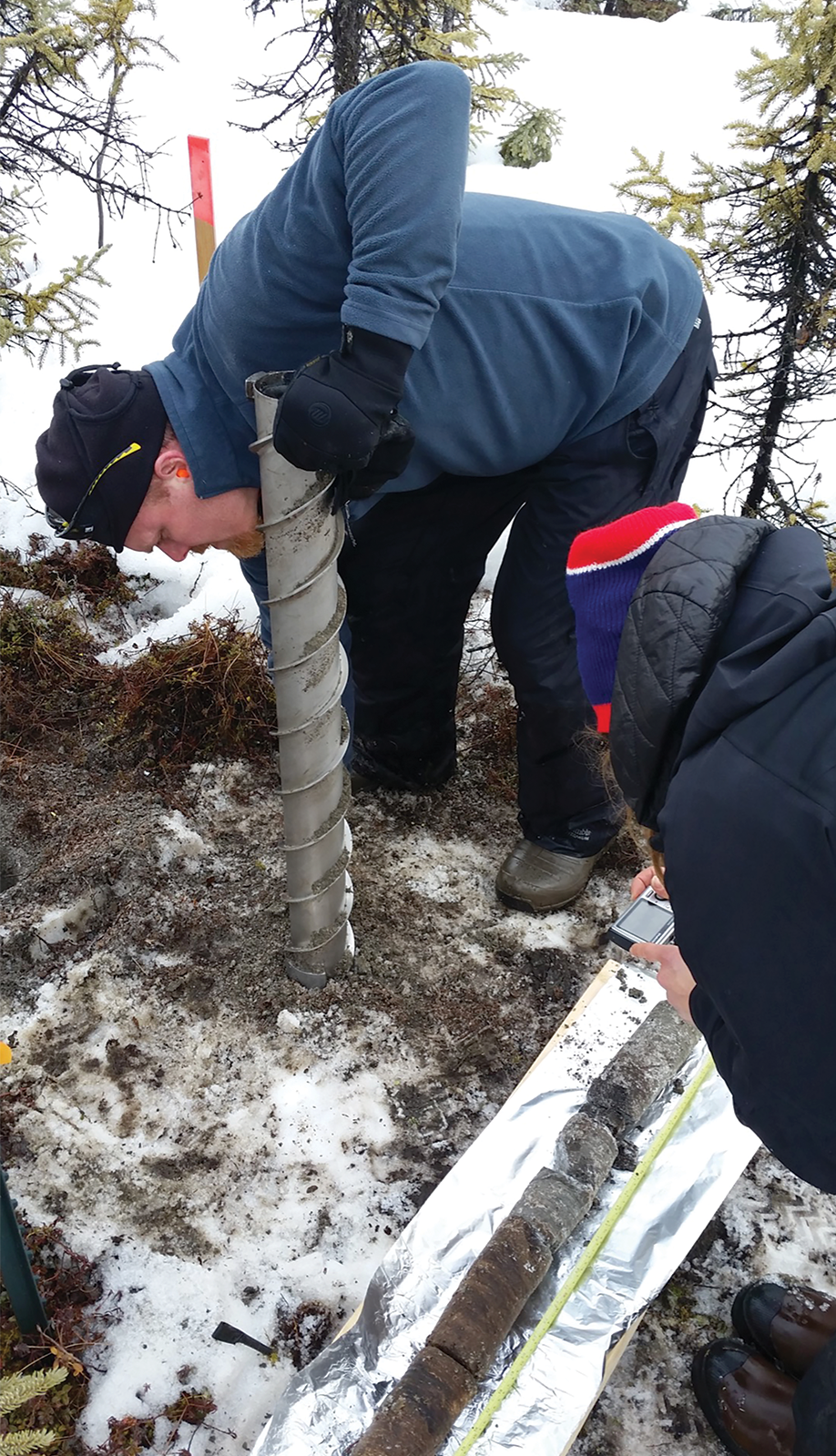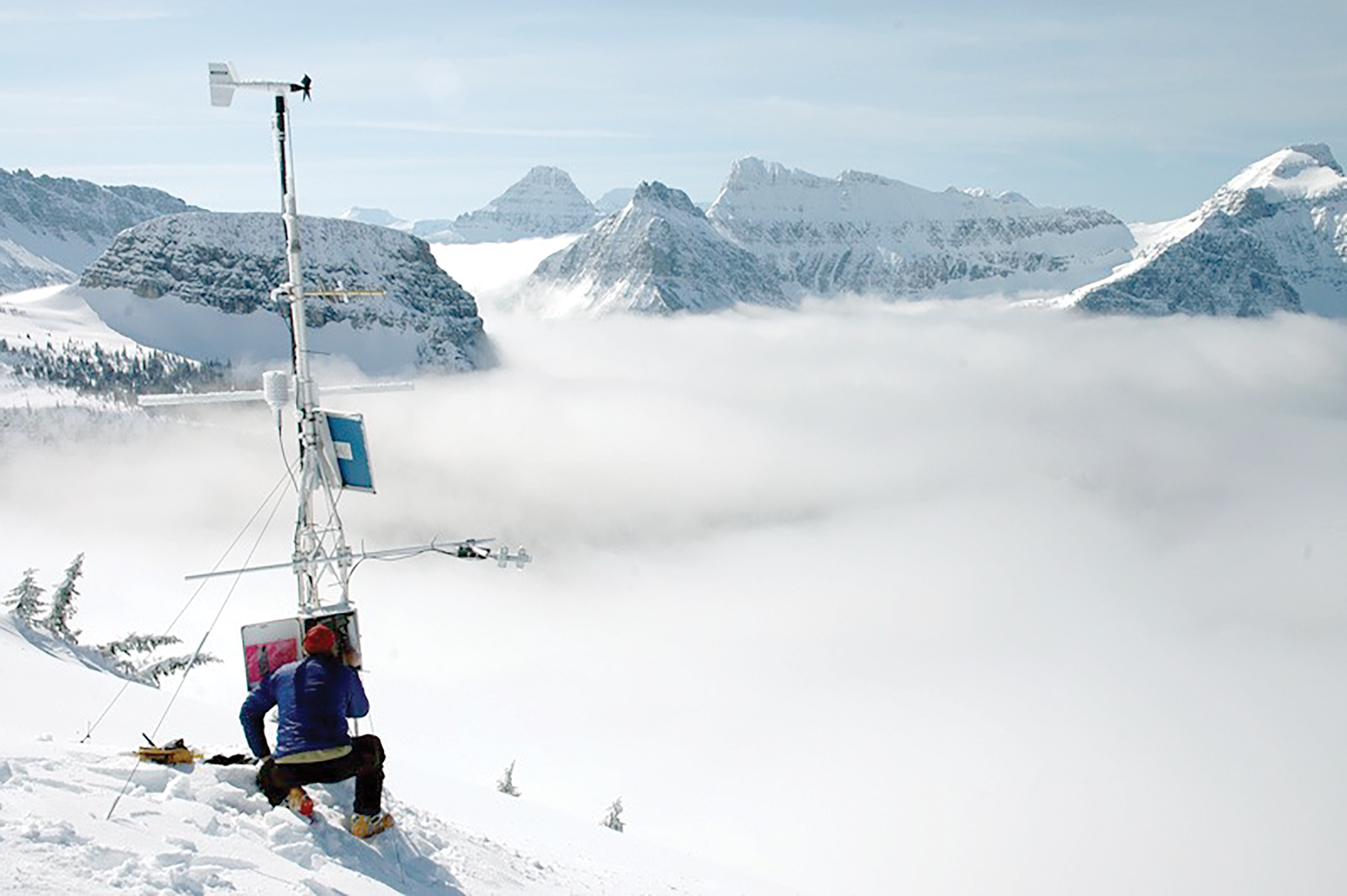Cryospheric Sciences at the U.S. Geological Survey
Links
- Document: Report (1.85 MB pdf) , HTML , XML
- Download citation as: RIS | Dublin Core
Introduction
The cryosphere is the collective parts of the Earth where water is in its frozen state and includes snow, glaciers, ice sheets, ice shelves, freshwater ice, sea ice, and permafrost. The cryosphere is a climate indicator and climate regulator. Surface cryosphere features, such as glaciers, snow, and sea ice, store freshwater and make the surface of the Earth bright white, which affects how much energy from the sun is absorbed or reflected by the planet. The subsurface cryosphere, such as permafrost (fig. 1) and ground ice, stores water and other materials, including carbon, nutrients, heavy metals, and viruses. Carbon storage in permafrost is one way the cryosphere regulates the Earth's climate. Changes to the cryosphere indicate the state of the Earth's climate. The cryosphere spans many regions of the Earth, from subtropical regions of the Himalayas to polar regions of the Arctic and Antarctica, and intersects many of the Earth's spheres, including the lithosphere, biosphere, atmosphere, and hydrosphere.

Photograph of thawing permafrost, which affects coastal erosion. Photograph by Brandt Meixell, U.S. Geological Survey.
U.S. Geological Survey Cryospheric Sciences Expertise
The cryosphere is rapidly changing, which results in a cascade of consequences for various stakeholders. Stakeholders rely on U.S. Geological Survey (USGS) cryospheric research as it pertains to water resources, ecosystems (fig. 2), global sea level, global climate feedback, and hazards such as snow avalanches (fig. 3), flooding, drought, landslides, and coastal erosion.

Photograph of Sperry Glacier in Glacier National Park, Montana. Mountain glaciers provide cold freshwater to alpine ecosystems. Photograph by Adam Clark, U.S. Geological Survey.

Photograph of a wet slab avalanche debris deposit in Glacier National Park, Montana. Photograph from U.S. Geological Survey.
Stakeholders and Effects of U.S. Geological Survey Cryospheric Sciences
The USGS is tackling problems in the cryosphere to deliver unbiased data and cross-disciplinary scientific information to a variety of stakeholders.
Validation
Ground validation data are vital for various National Aeronautics and Space Administration (NASA) Earth satellite and airborne missions (for example, Carlowicz [2024] and the NASA Ice, Cloud, and Land Elevation Satellite-2 [ICESat-2; https://icesat-2.gsfc.nasa.gov/]).
Security
Sea ice (fig. 4), permafrost (fig. 5), and snow (fig. 6) assessments for transportation corridors and various geopolitical and national security considerations are essential to the U.S. Department of Defense and U.S. Department of Transportation (for example, the USGS Snow and Avalanche Project [https://www.usgs.gov/programs/climate-research-and-development-program/science/usgs-snow-and-avalanche-project] and USGS Arctic Ocean sea ice research [https://www.usgs.gov/programs/climate-research-and-development-program/science/science-topics/sea-ice]).

Photograph of the sunset over sea ice along the Arctic Ocean. Photograph by Jessica Robertson, U.S. Geological Survey.

Photograph of USGS researchers collecting a permafrost core. Photograph by Miriam Jones, U.S. Geological Survey.

Photograph of the Garden Wall weather station, which is an upper elevation climate and weather monitoring station in Glacier National Park, Montana. Photograph by Erich Peitzsch, U.S. Geological Survey.
Policy
Policymakers rely on USGS cryospheric research that informs key climate summary documents (for example, the U.S. Global Change Research Program “Fifth National Climate Assessment” [https://nca2023.globalchange.gov/] and the Intergovernmental Panel on Climate Change [IPCC] “Special Report on the Ocean and Cryosphere in a Changing Climate” [https://www.ipcc.ch/srocc/]).
Land Management
Federal, Tribal, and State land and resource managers need to know the current and future status of snow, ice, and permafrost for hazard-related and water resource issues (for example, the USGS permafrost research [https://www.usgs.gov/programs/climate-research-and-development-program/science/science-topics/permafrost], the USGS Next Generation Water Observing System [https://www.usgs.gov/mission-areas/water-resources/science/next-generation-water-observing-system-ngwos], a USGS project generating a high-resolution snow dataset for Glacier National Park, the “Crown of the Continent Snowpack Project” [Barnhart and others, 2023], the USGS Benchmark Glacier Project [https://www.usgs.gov/programs/climate-research-and-development-program/science/usgs-benchmark-glacier-project], and the USGS From Snow to Flow web page [https://labs.waterdata.usgs.gov/visualizations/snow-to-flow/index.html#/]).
Coastal Effects
The National Oceanic and Atmospheric Administration (NOAA) needs projections of glacier and ice sheet contributions to global sea level (for example, the NOAA 2022 technical report “Global and Regional Sea Level Rise Scenarios for the United States” [https://sealevel.globalchange.gov/resources/2022-sea-level-rise-technical-report/] and USGS observations to quantify mountain glacier change [USGS, 2015]).
Animals and Habitat
The U.S. Fish and Wildlife Service relies on information about how the changing cryosphere affects ecosystems and endangers biological species to inform the U.S. Fish and Wildlife Environmental Conservation Online System species profiles (for example, Muhlfeld and others [2020] and a U.S. Fish and Wildlife Service species profile for Zapada glacier [western glacier stonefly; https://ecos.fws.gov/ecp/species/9133]).
Local Communities
Local communities need information on the changing cryosphere for subsistence harvest, food storage, hazards, and effects to infrastructure. USGS research on snow avalanches informs forecasting and hazard mitigation that keep recreationists and commerce corridors safe (USGS, 2024).
Importance of the Cryosphere
The Earth’s cryosphere is important for a variety of reasons. Snow, glaciers, sea ice, and permafrost affect people and places around the world.
• Snow—Approximately 50 percent of the runoff in the Western United States is derived from snowmelt (Li and others, 2017). On average, 27 people die in snow avalanches every year (Colorado Avalanche Information Center, 2024).
• Glaciers—The melting of ice sheets and glaciers, combined with thermal expansion of ocean water, or the volume of ocean water increasing due to rising temperatures, is expected to cause sea level to rise by at least 43 centimeters by 2100 (IPCC, 2019). Hundreds of millions of people living in coastal communities will likely be directly affected by sea level rise before 2100, and even more people may feel the effects of displacement and migration it forces (Hauer and others, 2020).
• Sea ice—September sea ice, or the annual minimum extent of the Northern Hemisphere sea ice, in the Arctic is shrinking by 12.2 percent every year (NASA, undated), opening new maritime trade routes, changing the way storms make landfall, and imperiling wildlife that rely on sea ice as a habitat. The Earth has not had a seasonally ice-free Arctic Ocean since more than 100,000 years ago (Vermassen and others, 2023).
• Permafrost—Permafrost contains two times the amount of carbon that is in the atmosphere (Schuur and others, 2022). USGS researchers are working with the global scientific community to constrain permafrost carbon cycle feedback to Earth’s climate.
Conclusion
Cryospheric sciences at the U.S. Geological Survey advance the understanding of snow, glaciers, permafrost, and sea ice. This research empowers stakeholders with insight into how the cryosphere regulates and responds to Earth's climate, and the mechanisms that link the cryosphere to people, plants, animals, and the many Earth systems it effects.
References Cited
Barnhart, T.B., Peitzsch, E.H., Milone, K.M., Miller, Z.S., and Watson, S.J., 2023, Historical simulated snowpack and other hydrometeorology data at 90 m for the Crown of the Continent and vicinity, United States and Canada, water years 1981–2020: U.S. Geological Survey data release, accessed August 2024 at https://doi.org/10.5066/P9TB1F2M.
Carlowicz, M., ed., 2024, NASA selects new aircraft-driven studies of Earth and climate change: National Aeronautics and Space Administration web page, accessed August 2024 at https://science.nasa.gov/earth/nasa-selects-new-aircraft-driven-studies-of-earth-and-climate-change/.
Colorado Avalanche Information Center, 2024, Statistics and reporting: Colorado Avalanche Information Center web page, accessed August 2024 at https://avalanche.state.co.us/accidents/statistics-and-reporting.
Hauer, M.E., Fussell, E., Mueller, V., Burkett, M., Call, M., Abel, K., McLeman, R., and Wrathall, D., 2020, Sea-level rise and human migration: Nature Reviews Earth & Environment: v. 1, p. 28–39, accessed August 2024 at https://doi.org/10.1038/s43017-019-0002-9.
Intergovernmental Panel on Climate Change [IPCC], 2019, The ocean and cryosphere in a changing climate—Special report of the Intergovernmental Panel on Climate Change: Cambridge University Press, 755 p., accessed August 2024 at https://doi.org/10.1017/9781009157964.
Li, D., Wrzesien, M.L., Durand, M., Adam, J., and Lettenmaier, D.P., 2017, How much runoff originates as snow in the Western United States, and how will that change in the future?: Geophysical Research Letters, v. 44, no. 12, p. 6163–6172, accessed August 2024 at https://agupubs.onlinelibrary.wiley.com/doi/full/10.1002/2017GL073551.
Muhlfeld, C.C., Cline, T.J., Giersch, J.J., Peitzsch, E., Florentine, C., Jacobsen, D., and Hotaling, S., 2020, Specialized meltwater biodiversity persists despite widespread deglaciation: Proceedings of the National Academy of Sciences of the United States of America—Biological Science, v. 117, no. 22, 7 p., accessed August 2024 at https://doi.org/10.1073/pnas.2001697117
National Aeronautics and Space Administration [NASA], [undated], Arctic sea ice minimum extent: National Aeronautics and Space Administration web page, accessed August 2024 at https://climate.nasa.gov/vital-signs/arctic-sea-ice/?intent=121.
Schuur, E.A.G., Abbott, B.W., Commane, R., Ernakovich, J., Euskirchen, E., Hugelius, G., Grosse, G., Jones, M., Koven, C., Leshyk, V., Lawrence, D., Loranty, M.M., Mauritz, M., Olefeldt, D., Natali, S., Rodenhizer, H., Salmon, V., Schädel, C., Strauss, J., Treat, C., and Turetsky, M., 2022, Permafrost and climate change—Carbon cycle feedbacks from the warming Arctic: Annual Review of Environment and Resources, v. 47, p. 343–371, accessed August 2024 at https://doi.org/10.1146/annurev-environ-012220-011847.
U.S. Geological Survey [USGS], 2015, Decades of measuring glaciers—A USGS legacy: U.S. Geological Survey web page, accessed August 2024 at https://www.usgs.gov/news/decades-measuring-glaciers-usgs-legacy.
U.S. Geological Survey [USGS], 2024, Snow avalanche research at the USGS that supports partners: U.S. Geological Survey web page, accessed August 2024 at https://www.usgs.gov/programs/climate-research-and-development-program/news/snow-avalanche-research-usgs-supports.
Vermassen, F., O’Regan, M., de Boer, A., Schenk, F., Razmjooei, M., West, G., Cronin, T.M., Jakobsson, M., and Coxall, H.K., 2023, A seasonally ice-free Arctic Ocean during the last interglacial: Nature Geoscience, v. 16, p. 723–729, accessed August 2024 at https://doi.org/10.1038/s41561-023-01227-x.
For more information, contact
USGS Northern Rocky Mountain Science Center
P.O. Box 169, West Glacier, MT 59936
Or visit the Northern Rocky Mountain Science Center website at
Disclaimers
Any use of trade, firm, or product names is for descriptive purposes only and does not imply endorsement by the U.S. Government.
Although this information product, for the most part, is in the public domain, it also may contain copyrighted materials as noted in the text. Permission to reproduce copyrighted items must be secured from the copyright owner.
Suggested Citation
Florentine, C., Peitzsch, E., Jones, M., Barnhart, T., and Cronin, T., 2024, Cryospheric sciences at the U.S. Geological Survey: U.S. Geological Survey Fact Sheet 2024–3043, 4 p., https://doi.org/10.3133/fs20243043.
ISSN: 2327-6932 (online)
ISSN: 2327-6916 (print)
| Publication type | Report |
|---|---|
| Publication Subtype | USGS Numbered Series |
| Title | Cryospheric sciences at the U.S. Geological Survey |
| Series title | Fact Sheet |
| Series number | 2024-3043 |
| DOI | 10.3133/fs20243043 |
| Publication Date | December 06, 2024 |
| Year Published | 2024 |
| Language | English |
| Publisher | U.S. Geological Survey |
| Publisher location | Reston VA |
| Contributing office(s) | Northern Rocky Mountain Science Center |
| Description | 4 p. |
| Online Only (Y/N) | N |


